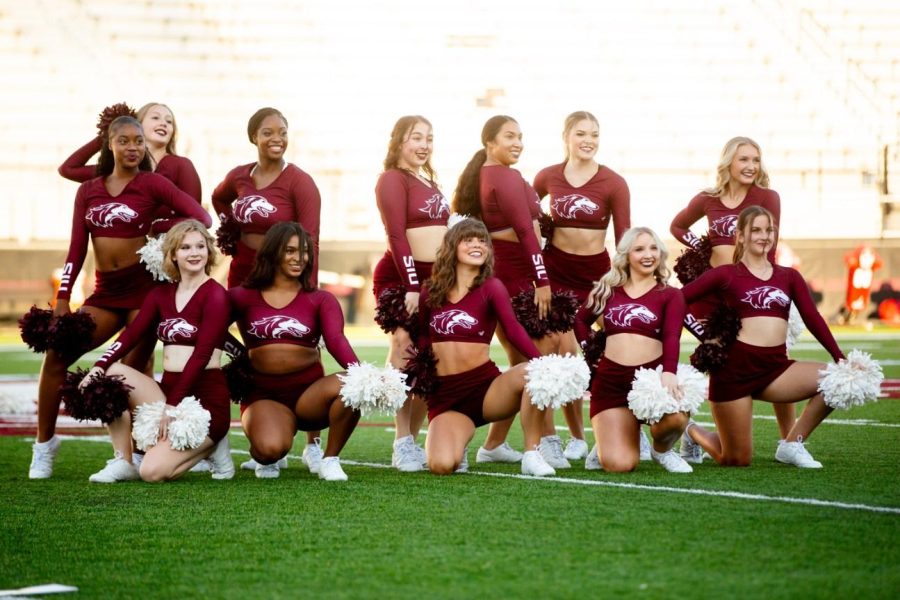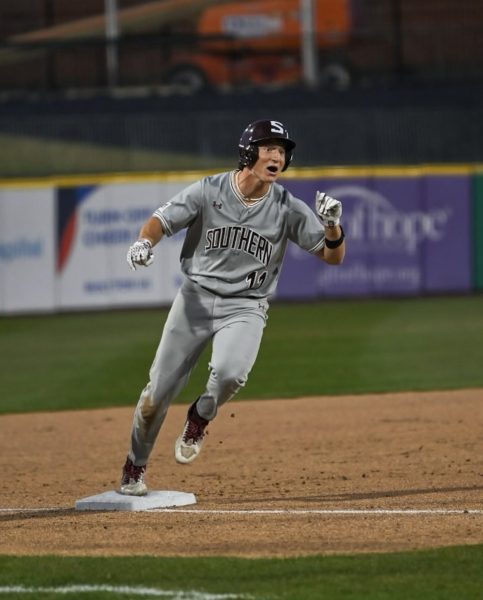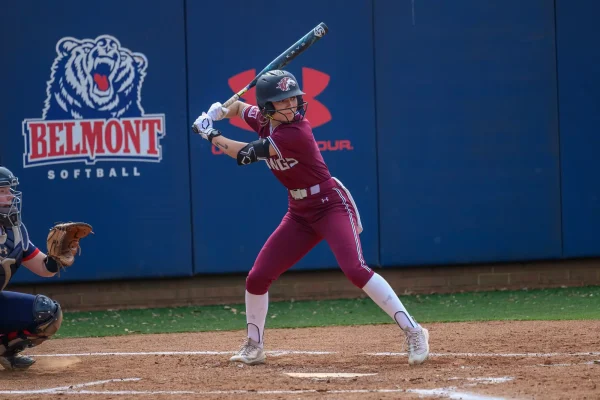STUNT: Representation for Cheer and spirit team athletes under Title IX
While Title IX has helped many women’s sports programs, other athletic programs are still underfunded and never met the requirements of Title IX to be considered a sport.
Spirit teams Head Coach Cydnee Totzke has been coaching at SIU since 2019, with this being her fifth decade involved in the sport. She coached high school cheer for 25 years and has spent seven years coaching at the college level.
Totzke grew up participating from middle school through college. She says being in cheer means choosing to be an athlete without being recognized as one.
Advertisement
“There is a thing that goes like this, ‘athlete by nature; cheerleader by choice,’” Totzke said. “It is the same way someone might like basketball or field hockey. It’s just what is involved in it that draws them to the activity.”
Totzke said the addition of the competition factor of cheer in the 80s has made a big impact on the sport by giving the athletes their moment to show off their skills.
Along with competing, cheerleaders perform at other athletic teams’ events and show support at various campus and community events in addition to its athletic side.
“When people like to get into the ‘is it a sport or not? debate, I always say no, it’s not, it’s more than a sport,” Totzke said. “We are honing in on our athletic skills of stunting, tumbling, leaps and turns, and so all of that is packaged in a support role.”
Totzke said, as Title IX was being enforced heavily in the 90s, it dipped into the budget of programs such as cheer, dance and band. Cheer became somewhat of an “anti-sport” among other athletic programs.
Totzke said she appreciates what Title IX has done with bringing women’s sports into the conversation, specifically at the high school level for dance and cheerleading.
“What I loved about moving to Illinois […] is that the High School Association recognizes both cheer and dance as a winter female sport,” Totzke said. “Illinois high school [cheerleaders and dancers] are used to… being an athlete, so when they’re moving on to a college team, that’s their mindset. That’s their expectation.”
Advertisement*
SIU’s spirit teams do not currently compete like other collegiate spirit teams across the country, mainly because of costs, Totzke said.
“I think the missing component at SIU specifically is the funding to allow our Spirit teams to compete,” Totzke said. “They are support groups, they’re cheering and dancing on the sidelines 90% of the year. That one opportunity to compete with their peers, it’s just very expensive.”
Totzke said she would love to see the funding for national cheer and spirit competitions as a reward for all the time and effort the Spirit teams give to SIU throughout the school year.
Some SIU faculty have been supportive in efforts to get the Spirit teams competing, like Vice Chancellor of Student Affairs Jeffery T. Burgin Jr., Vice Chancellor for Diversity Equity and Inclusion Dr. Paul Frazier, and SIU Foundation CEO Matt Kupec, Totzke said.
“With all the time we’re spending supporting other teams and doing campus appearances and community appearances [it] often feels like we are already giving back,” Totzke said. “Yet it’s not a student job or is not necessarily funded with scholarships.”
Totzke said the Spirit teams are allowed access to what most of the other SIU athletes get, including the athletic academic center, the fueling station, and the weight room. They do have to share a trainer with the Women’s Basketball team and don’t have their own.
They are also awarded a tuition waiver that’s under $1,000 with no other compensation for housing, food or textbooks, Totzke said.
To this day, cheerleading is not recognized as a sport under Title IX. An up-and-coming female sport called STUNT was created that stems from cheer and is recognized as a sport under Title IX.
According to the website Stunt the sport, STUNT is a competitive game between two teams executing “skills-based routines” in a variety of categories including jumping, tumbling, partner stunts, pyramids, tosses and different team routines.
“That [was] initiated in 2010. I was actually part of some grassroots efforts to get that on the scene in Wisconsin,” Totzke said. “There are youth programs, there are middle school and high school programs, and it’s really taking off collegiately.”
STUNT is showing up in many Division II and III schools that want to attract students to their campus, and more slowly at Division I schools, where their cheer programs are still flourishing, Totzke said.
“Locally, the University of Kentucky now has both, so you all know how strong Kentucky is [as a] traditional cheerleading program,” Totzke said. “What it’s really done is added 40 more female students to a sports roster.”
SIU currently does not have a STUNT team, but Totzke has brought it up to the administration along with having support from Saluki Gymnastics owners Kari Scott and Travis Walczynski, who would like to partner with Saluki Spirit Teams, she said.
“She [Kari Scott] basically feels that STUNT is the next big thing for women,” Totzke said. “She doesn’t want to mess around with the all-star cheer and the glitter and the bows and, you know, all the pageantry stuff that kind of gets mocked.”
If SIU can get a STUNT program, Totzke hopes to start at the club level with the sport.
“[At] a lot of the D1 schools, the cheer coach will also run the club team,” Totzke said. “And, [it would attract] students on campus that just cannot give up all that time to be on the spirit team, because we give back about 500 hours a year in games and events and practice.”
Totzke said STUNT athletes are afforded their own athletic trainer, scholarships, and support from the NCAA that’s making a big difference with these athletes.
“They’re at the last step before officially becoming a sport. So to me, it’s a win-win,” Totzke said. “There are no cons that I can see.”
Staff reporter Jamilah Lewis can be reached at jlewis@dailyegyptian.com or on Twitter @jamilahlewis.
Advertisement











